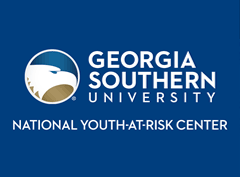Focused Area
Improving School Climate for Youth-At-Risk
Relevance to Focused Area
Traditional alcohol prevention programs that are effective take 8 to 12 sessions. Challenging alcohol expectancies can do the job in one. This presentation will cover the theory and practice of challenging alcohol in classroom lessons, providing opportunities for schools to reduce underage and binge drinking, without consuming large amounts of class time. The time take away from mandated lessons is the biggest obstacle schools interested in prevention face. Learning how to apply alcohol expectancy theory overcomes this barrier.
Primary Strand
Social & Emotional Skills
Relevance to Primary Strand
Alcohol Expectancy Theory teaches that most of the good effects of drinking are mental, they're not caused by alcohol. Students who know this naturally drink less. This simple understanding improves students' social skills and significantly lowers risk factors.
Brief Program Description
Learn the fundamentals of Alcohol Expectancy Theory, allowing you to challenge student's beliefs about the effects of alcohol and reduce underage and binge drinking in a single session. NIAAA recommends this new approach to youth alcohol prevention. Learn how to apply this in a classroom setting.
Summary
NIAAA recommends the application of alcohol expectancy theory in prevention programs based on nearly 1,000 published studies showing it's efficacy. This presentation will review the theory behind alcohol expectancy theory.
Participants are taught the definitions of physical vs. mental effects of drinking. Physical effects are caused by the chemical alcohol acting on a person's body, while mental effects are associated with drinking, whether or not the effect is caused by alcohol. Participants will learn the actual physical effects alcohol causes and that most of the positive social effects people attribute to drinking are mental.
Participants are then taken through an exercise identifying and challenging their own beliefs (mental expectancies) they attribute to drinking. This procedure can be used in classrooms by teachers wishing to apply this prevention method.
Participants will be guided through an "Alcohol Memory Map" exercise. An alcohol memory map shows the associative relationships between the mental effects attributed to drinking. Using it teaches the brain science of how neural networks around alcohol beliefs are established, and how they can be manipulated by a knowledgable teacher.
A "Bar Lab" video will be played that shows students at a bar who didn't know they were drinking non-alcoholic beer actually getting "drunk."
Then a review of efficacy studies will be presented showing how application of alcohol expectancy theory significantly reduces underage drinking in a single session.
Evidence
The presenter for this program is the author of an expectancy based alcohol prevention program that has been reviewed by SAMSHA's National Registry of Evidence Based Programs and Practices. The studies submitted there found significant reductions in underage and binge drinking after only a single 60-90 minute lesson.
NIAAA lists challenging alcohol expectancies as 1 of only 3 Tier One programs for college alcohol prevention. They have also published a paper encouraging preventionists to use the principles of alcohol expectancy theory in classroom based interventions.
Format
Individual Presentation
Biographical Sketch
Dr. Peter DeBenedittis is a Certified Prevention Specialist who speaks to thousands of students and trains hundreds of teachers across America each year. Having previously run political campaigns, Peter D. now uses his advertising knowledge to educate for prevention rather than seduce for profits. Dr. D. has consulted to the White House Office on Drug Control Policy, the Centers for Disease Control, the American Medical Association, and the National Cancer Institute. The CBS program 48 Hours featured his alcohol prevention work. He is the author of several widely used educational curricula teaching media education and alcohol prevention.
Start Date
11-7-2015 8:30 AM
End Date
11-7-2015 9:45 AM
Recommended Citation
DeBenedittis, Peter, "Challenging Alcohol Expectancies: How to reduce underage drinking in a single session" (2015). National Youth-At-Risk Conference, West (2015-2017). 9.
https://digitalcommons.georgiasouthern.edu/nyar_vegas/2015/rural/9
Challenging Alcohol Expectancies: How to reduce underage drinking in a single session
Learn the fundamentals of Alcohol Expectancy Theory, allowing you to challenge student's beliefs about the effects of alcohol and reduce underage and binge drinking in a single session. NIAAA recommends this new approach to youth alcohol prevention. Learn how to apply this in a classroom setting.
